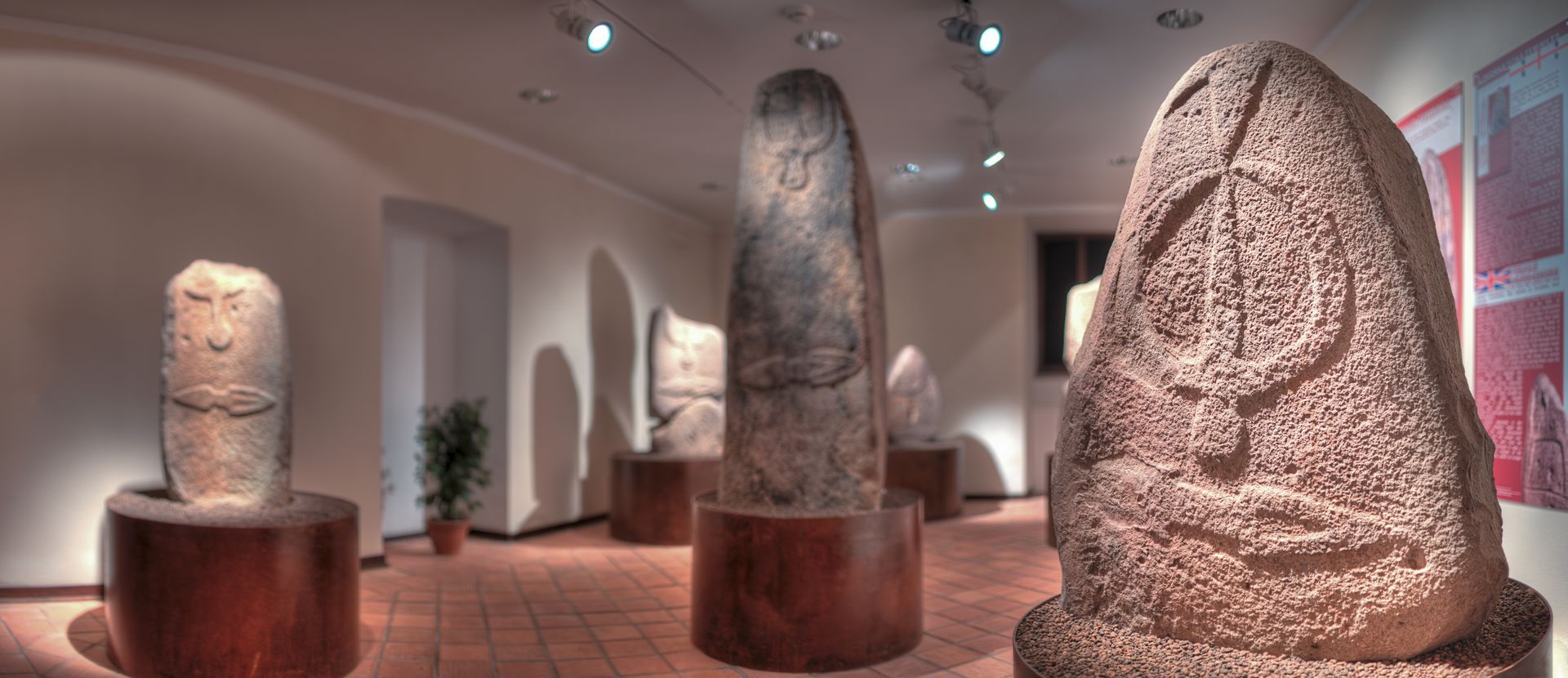Fathoming the enigma that surrounds the origin and development of Megalithic culture, namely the pursuit of the vague and rugged paths that are the essence of the greatest pre- and proto-historic European civilization, is always a great thrill. The skillful construction, erection and polishing of solid rock in order to create signs of extraordinary dimensions to which the care of the sacred and spiritual and of the physical and metaphysical could be entrusted was the origin of the cultural flourishing of an entire continent that would determine the fate of the world for millennia to come.
Megalithic culture is a complex phenomenon that stretches across the arc of many millennia, covering an extremely vast territory which, from the Atlantic shores of Europe, Spain, Portugal, Britain, reaches not only Italy and Sardinia but also vast interior swathes of Saharan land. With surprising rapidity, there appears in all of Atlantic Europe a humanity that is familiar with agriculture, ceramics, stone cleaning and architecture, that knows how to move huge blocks and will take its name from such construction techniques… (Muller, 1961). Megalithic culture, therefore, as a society with origins characteristic of the Neolithic Age, seems to rise from nowhere, if not from the bottom of the ocean. It is the dawn of the sixth millennium! And in Europe thousands of menhirs will be erected, a word which means “long stone” in Breton, “perdas fittas” in Sardinian!
But what are menhirs?
In order to respond to this question, one must follow two trails: the first is that of archaeoastronomy, which provides evidence of constant attention to the celestial trajectory of the sun, in particular to the sun of the winter solstice, and which points unequivocally to a solar cult. The second is the heritage of Celtic civilization, depository of the Megalithic tradition and final expression of the great stone cults by way of the Celtic priests, the Druids.
It is Cesar, in De Bello Gallico, who comments that the Druids …carry on long disputes over the stars and their motions, over the size of the Universe and of the Earth, over the order of nature… while Pomponius Mela adds that the Druids possess knowledge of the heavens and the stars, and Diodorus Siculus, in the first century B.C., says that the Celts honor the Sun God more than any other divinity. To this god is dedicated a sacred enclosure and a magnificent circular temple… Stonehenge?
Do the menhirs, therefore, point exclusively to a solar cult?
The largest concentration of menhirs in the environs of Laconi is found in Perda Iddocca, a valley situated to the west of the modern habitation, among the hills of Conca Zerfalíus and Nicola Cannas. In this area, dedicated to cultivation for many years, eight monoliths, five of which are still to be found on the plot, were discovered during plough work; these menhirs, all constructed from a single block of local trachyte, have an average height of 180cm with one side flat, the other convex.
The Perda Iddocca grouping comprises three types of menhirs: those that are the most ancient, defined as “proto-anthropomorphic” due to their lack of anatomical features; those defined as “anthropomorphic” and characterized by representations in bas-relief of nose and eyebrows; and finally, the latest type being the male or female statue-menhirs (the former characterized by an inverted human figure and double-dagger, the latter distinguished by the presence of breasts).
A few hundred meters to the west of Perda Iddocca, overturned onto the surface of the soil, the six statue-menhirs of Pranu Maore were discovered. Farther to the east, in the locality of Corte Noa, there is a grouping of another seven menhirs in alignment.
The datings proposed for these monoliths go from the recent Neolithic age (fourth millennium B.C.) for the simpler types and up until the Copper Age (third millennium B.C.) for the statue-menhirs.
 Dettaglio di Piscina 'e Sali III (foto di Nicola Castangia)
Dettaglio di Piscina 'e Sali III (foto di Nicola Castangia)